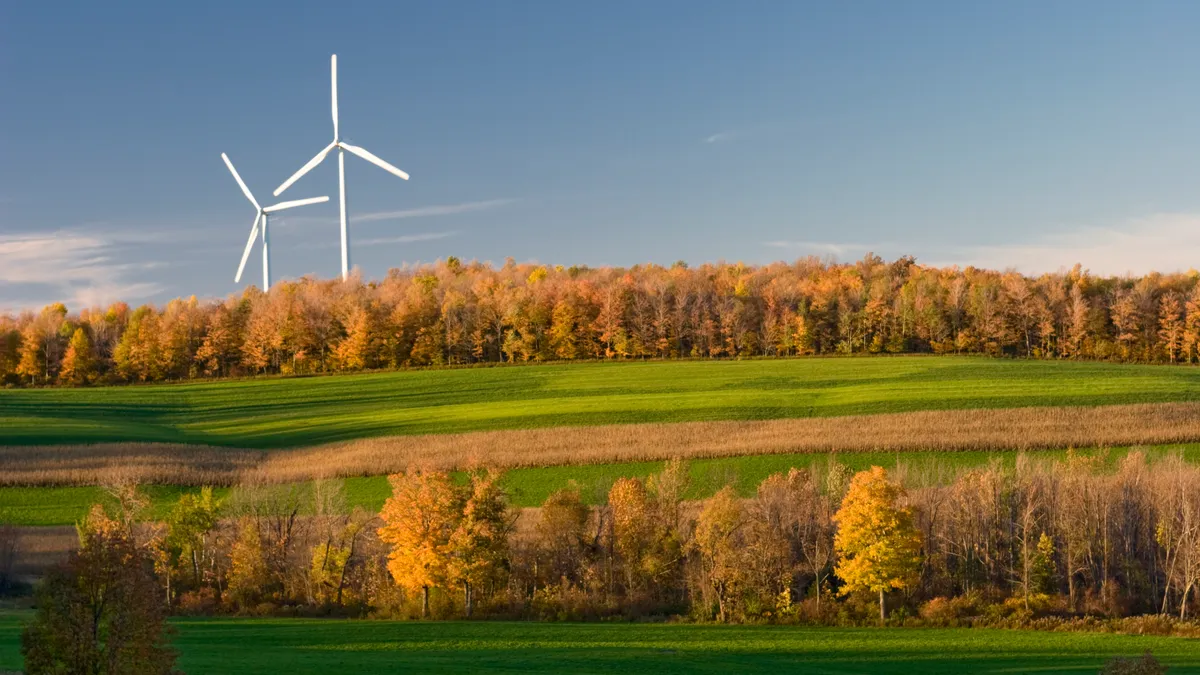Dive Brief:
-
In order to procure 70% of its electricity from renewable resources by 2030, New York must add 20 GW over the next eight years, according to an Aug. 1 report from state Comptroller Thomas DiNapoli.
-
Project cancelations, delays in siting and interconnection processes, and inconsistent incentive programs have all hindered the ability of New York developers to deploy new renewable energy capacity, according to the report.
-
Noah Ginsburg, executive director of the New York Solar Energy Industries Association, said he remains optimistic about the industry's ability to hit state targets, but that he agreed with the report's conclusions about the challenges developers face.
Dive Insight:
New York is, by the state comptroller's estimates, the nation's sixth largest producer of renewable energy. And yet it has a long way to go if it means to achieve the goals of the Climate Leadership and Community Protection Act passed in 2019.
The law calls for 70% of the electricity used in the state to come from renewable resources by 2030, and for the elimination of greenhouse gas emissions from electrical generation by 2040. As of 2022, 29% of the state's electricity comes from renewable sources, according to the comptroller's report. To bridge the gap, the comptroller estimates, will require an additional 20 GW of generation capacity.
But in the last 20 years, the state has only added 12.9 GW from both renewable and fossil resources.
“New York State has rightly pursued an aggressive campaign to reduce greenhouse gas emissions to limit the most dangerous impacts of climate change,” DiNapoli said in a statement. “New York’s energy goals are attainable, but require careful attention and management to address challenges, meet ambitious deadlines and avoid future pitfalls.”
According to DiNapoli's report, the state's progress has been hamstrung by a slew of project cancelations, with 11.3% of contracted generation capacity canceled before it came online between 2005 and April 2023. And only 3.1% of the projects awarded contracts since 2015 have become operational. The report cited interconnection issues, permitting and siting delays, and inconsistent incentive programs as key factors that have slowed renewable energy development in the state.
Those conclusions largely mesh with the experience of the state’s renewable energy developers, Ginsburg said. While there is some nuance in how the issues play out at the ground level, the three issues identified by DiNapoli all come into play for utility-scale and distributed resources alike.
For example, distributed solar — NYSEIA's area of emphasis — does not benefit from the state's creation of an Office of Renewable Energy Siting, which was designed to streamline siting and permitting processes for renewable energy projects of at least 25 MW, Ginsburg said. This means that the state has lost gigawatts of potential generation capacity to community-level ordinances that restrict renewable energy development or place moratoriums on permitting new projects.
But Ginsburg noted that distributed generation is largely a bright spot when it comes to meeting state benchmarks.
The state is on track to exceed the 10 GW target for distributed energy generation, he said, and could perhaps help the state meet its overall emissions goals more quickly if state leaders were to consider more ambitious targets for distributed resources.














